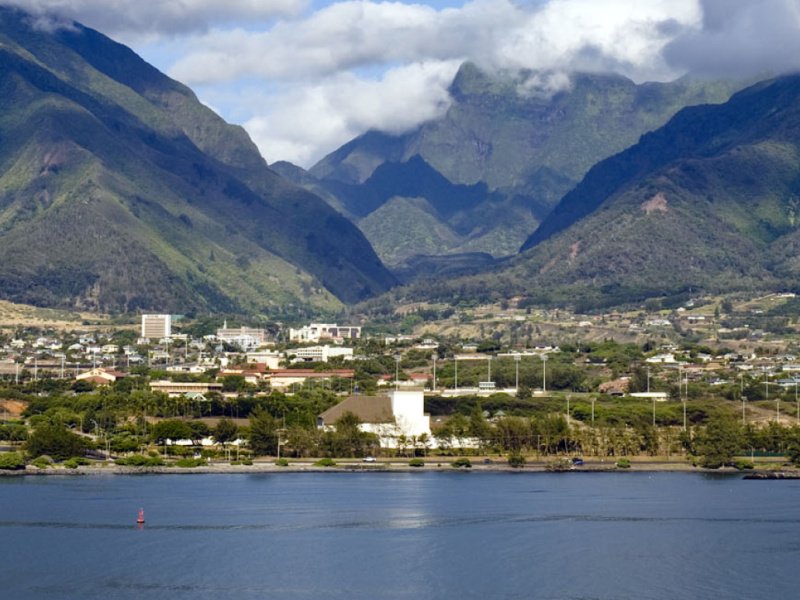
Arnie Sciullo
Arnie Sciullo, a Pittsburgh native, moved to Maui in 1976 to work as an early education instructor at Maui Community College. He was a co-founder of a weekly meeting at the Kahului Library called the Maui Gay Rap Group, which eventually became Both Sides Now, Maui's LGBT organization from 1981 to 2011.
After a year on the job, Arnie was not included on the rehire list for the subsequent academic year. Kermit Coad, his department chair, told him that Provost Sanae Moikeha did not want to rehire him because he was gay. Moikeha told Coad that her decision was based upon her religious beliefs as a member of the Church of Jesus Christ of Latter-day Saints. Coad resigned as department chair shortly thereafter.
The American Civil Liberties Union took on the case with the help of then-attorney Joel E. August and filed suit against Maui Community College and the Board of Regents in the federal U.S. District Court on the basis that the termination infringed upon his First Amendment and Equal Protection constitutional rights. It also sought to prevent further discrimination against gays and lesbians by the University of Hawaiʻi. At the time, there were no employment discrimination laws protecting adverse employment actions on the basis of sexuality and the ACLU hoped the case would push the legislature to pass legislation prohibiting employment discrimination on the basis of sexual orientation. "I feel it’s a real question of survival – in my case, economic," Sciullo said in a news conference.
Arnie worked at the Peahi School preschool for a year, surviving with the assistance of food stamps. When a quick resolution to the lawsuit did not occur, he moved temporarily to San Francisco to work on a PhD and to teach. He also helped found the Sisters of Perpetual Indulgence, taking the vocational name, Sister Marie Eveready.
In 1982, the University of Hawai'i agreed to settle Arnie's case by hiring him for three years, with a minimum of six credits per semester, and $5,000 in back wages. Arnie's attorney Joel August said “I would think that the university would be much more susceptible now to demands of the community for a statement of non-discrimination based on sexual preference.”
Arnie expressed his gratitude for the support he received throughout the ordeal in a letter to the community newsletter Both Sides Now. “With this settlement,” he wrote, “the State admits that discrimination based on sexual preference occurred, documenting it in the public record.” He also thanked the gay community for their support, saying it was “the most meaningful demonstration of love and community. It was their aloha that saw me through the hard times and provided me with courage.” ACLU attorney Joel August, who helped negotiate the settlement, also noted that the acknowledgment of discrimination would serve as important documentation for future efforts to include sexual orientation in non-discrimination laws.
Despite the efforts of LGBT and labor activists from 1978 onward, it would not be until 1991, when Gov. John Waiheʻe signed Act 2 into law, that Hawaiʻi added "sexual orientation" to the list of protected categories in employment and housing discrimination cases. The legislature found that it was "contrary to national and state public policies, to allow discrimination in employment merely because of a person's sexual orientation, whether or not such orientation is immutable or voluntary." Testimony in support of the legislation included the Roman Catholic Church of Hawai'i, the United Methodist Church -- Hawai'i District, the United Church of Christ, and the Hawai'i Council of Churches.
Arnie worked at Maui Community College from then until 1995, when he passed away with his lover Bryan by his side. During the last five years of his life, Arnie was also President of the Maui AIDS Foundation, where he helped establish the island’s first-ever AIDS residence. A loan scholarship program for early education majors at University of Hawaiʻi Maui College bears his name.
Story by Lance D. Collins with contributions by Joe Wilson.
Images Credits:
Banner - Photo by John C. Derrick, Hawaii Guide
Image 1 - Honolulu Advertiser, February 22, 1978
Image 2 - Honolulu Star-Bulletin, February 22, 1978
Image 3 - Honolulu Advertiser, May 11, 1982
Image 4 - Both Sides Now, June 1982
Image 5 - Bay Area Reporter, December 1995






